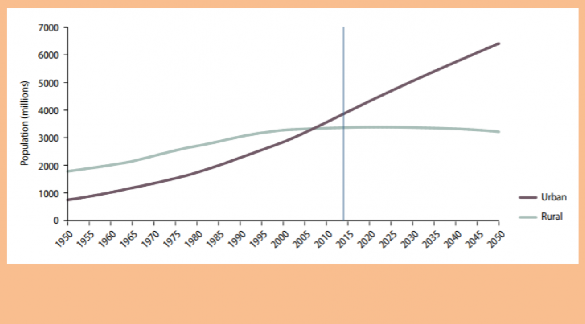2.5. Census Towns
In 2011, a new definition of census town has been developed. This urban classification of 'census towns' helps differentiate between India's small farming communities and the larger market town-type settlements that are experiencing rapid and haphazard growth.
To be classified as a census town, a village must fulfil three criteria;
♤ it need at least 5,000 inhabitants,
♤ a density of 400 people per sq. km, and
♤ at least three quarters of its male working population must be "engaged in non-agricultural pursuits".
GLOBAL TRENDS IN URBANIZATION
Globally, more people live in urban areas than in rural areas. In 2007, for the first time in history, the global urban population exceeded the global rural population, and the world population has remained predominantly urban thereafter. The planet has gone through a process of rapid urbanization over the past six decades. The urban population is expected to continue to grow, so that by 2050, the world will be one third rural (34 per cent) and two-thirds urban (66 per cent).

Urban and rural population of the world, 1950–2050. (World Urbanization Prospects: the 2014 Revision)
